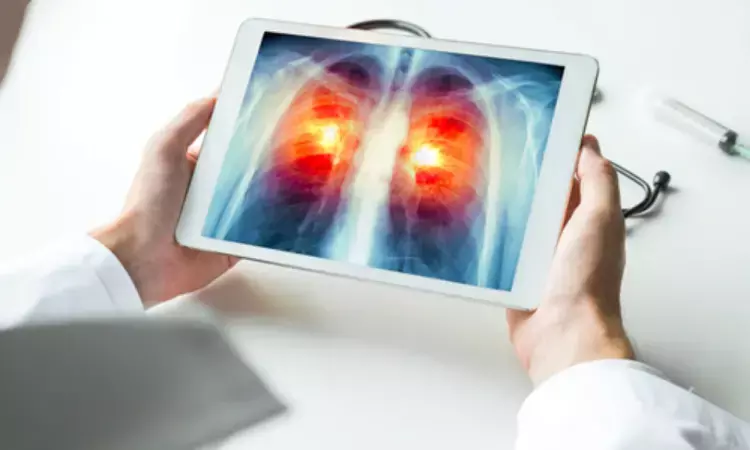- Home
- Medical news & Guidelines
- Anesthesiology
- Cardiology and CTVS
- Critical Care
- Dentistry
- Dermatology
- Diabetes and Endocrinology
- ENT
- Gastroenterology
- Medicine
- Nephrology
- Neurology
- Obstretics-Gynaecology
- Oncology
- Ophthalmology
- Orthopaedics
- Pediatrics-Neonatology
- Psychiatry
- Pulmonology
- Radiology
- Surgery
- Urology
- Laboratory Medicine
- Diet
- Nursing
- Paramedical
- Physiotherapy
- Health news
- Fact Check
- Bone Health Fact Check
- Brain Health Fact Check
- Cancer Related Fact Check
- Child Care Fact Check
- Dental and oral health fact check
- Diabetes and metabolic health fact check
- Diet and Nutrition Fact Check
- Eye and ENT Care Fact Check
- Fitness fact check
- Gut health fact check
- Heart health fact check
- Kidney health fact check
- Medical education fact check
- Men's health fact check
- Respiratory fact check
- Skin and hair care fact check
- Vaccine and Immunization fact check
- Women's health fact check
- AYUSH
- State News
- Andaman and Nicobar Islands
- Andhra Pradesh
- Arunachal Pradesh
- Assam
- Bihar
- Chandigarh
- Chattisgarh
- Dadra and Nagar Haveli
- Daman and Diu
- Delhi
- Goa
- Gujarat
- Haryana
- Himachal Pradesh
- Jammu & Kashmir
- Jharkhand
- Karnataka
- Kerala
- Ladakh
- Lakshadweep
- Madhya Pradesh
- Maharashtra
- Manipur
- Meghalaya
- Mizoram
- Nagaland
- Odisha
- Puducherry
- Punjab
- Rajasthan
- Sikkim
- Tamil Nadu
- Telangana
- Tripura
- Uttar Pradesh
- Uttrakhand
- West Bengal
- Medical Education
- Industry
AI helps radiologists detect bone fractures

OAK BROOK, Ill. - Artificial intelligence (AI) is an effective tool for fracture detection that has potential to aid clinicians in busy emergency departments, according to a study in Radiology.
Missed or delayed diagnosis of fractures on X-ray is a common error with potentially serious implications for the patient. Lack of timely access to expert opinion as the growth in imaging volumes continues to outpace radiologist recruitment only makes the problem worse.
AI may help address this problem by acting as an aid to radiologists, helping to speed and improve fracture diagnosis.
To learn more about the technology's potential in the fracture setting, a team of researchers in England reviewed 42 existing studies comparing the diagnostic performance in fracture detection between AI and clinicians. Of the 42 studies, 37 used X-ray to identify fractures, and five used CT.
The researchers found no statistically significant differences between clinician and AI performance. AI's sensitivity for detecting fractures was 91-92%.
"We found that AI performed with a high degree of accuracy, comparable to clinician performance," said study lead author Rachel Kuo, M.B. B.Chir., from the Botnar Research Centre, Nuffield Department of Orthopaedics, Rheumatology and Musculoskeletal Sciences in Oxford, England. "Importantly, we found this to be the case when AI was validated using independent external datasets, suggesting that the results may be generalizable to the wider population."
The study results point to several promising educational and clinical applications for AI in fracture detection, Dr. Kuo said. It could reduce the rate of early misdiagnosis in challenging circumstances in the emergency setting, including cases where patients may sustain multiple fractures. It has potential as an educational tool for junior clinicians.
"It could also be helpful as a 'second reader,' providing clinicians with either reassurance that they have made the correct diagnosis or prompting them to take another look at the imaging before treating patients," Dr. Kuo said.
Dr. Kuo cautioned that research into fracture detection by AI remains in a very early, pre-clinical stage. Only a minority of the studies that she and her colleagues looked at evaluated the performance of clinicians with AI assistance, and there was only one example where an AI was evaluated in a prospective study in a clinical environment.
"It remains important for clinicians to continue to exercise their own judgment," Dr. Kuo said. "AI is not infallible and is subject to bias and error."
Dr Kamal Kant Kohli-MBBS, DTCD- a chest specialist with more than 30 years of practice and a flair for writing clinical articles, Dr Kamal Kant Kohli joined Medical Dialogues as a Chief Editor of Medical News. Besides writing articles, as an editor, he proofreads and verifies all the medical content published on Medical Dialogues including those coming from journals, studies,medical conferences,guidelines etc. Email: drkohli@medicaldialogues.in. Contact no. 011-43720751


